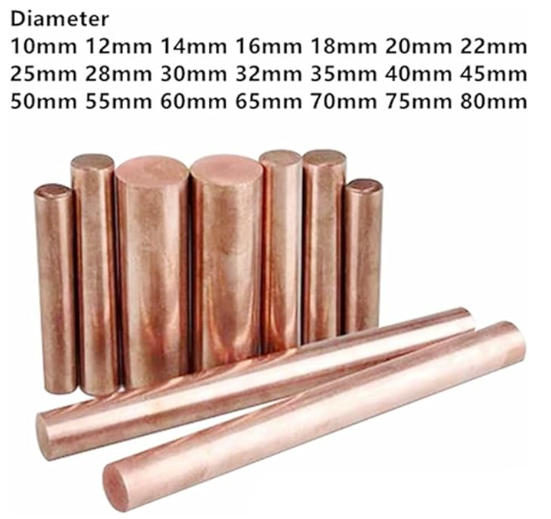Chromium Zirconium Copper (C18150): Composition, Properties, Applications, and Market Trends in 2025
Oct 21, 2025Chromium Zirconium Copper, commonly designated as C18150 or CuCrZr, is a high-performance precipitation-hardened alloy renowned for its exceptional balance of electrical conductivity, thermal stability, and mechanical strength. As of October 2025, with the global shift toward electrification and advanced manufacturing, CuCrZr is increasingly vital in sectors like automotive, aerospace, and electronics. The alloy's ability to withstand high temperatures while maintaining conductivity makes it a preferred choice for demanding environments. Amid rising demand for EVs and renewable energy infrastructure, the CuCrZr market is projected to grow robustly, emphasizing its role in sustainable technologies.

C18150 consists primarily of copper (Cu) at approximately 98.85%, with 1% chromium (Cr) and 0.15% zirconium (Zr). This formulation is achieved through controlled melting and aging processes, where Cr and Zr form strengthening precipitates during heat treatment. Trace elements like oxygen are minimized to below 0.001% to prevent embrittlement. The alloy complies with UNS standards and RWMA Class 2 specifications, ensuring consistency for industrial use. This composition enhances precipitation hardening, allowing the material to achieve optimal properties after solution annealing at 900-1000°C followed by aging at 450-500°C.
CuCrZr exhibits superior electrical conductivity (around 80-90% IACS) and thermal conductivity (320-340 W/m·K), surpassing many copper alloys while offering high tensile strength (400-500 MPa) and yield strength (350-450 MPa). Its hardness ranges from 120-150 HV, with excellent wear resistance and creep strength at elevated temperatures up to 500°C. The alloy resists softening during welding and shows good corrosion resistance in atmospheric and marine environments. Density is about 8.89 g/cm³, with a melting point near 1080°C, making it machinable and formable in rods, bars, and strips.
C18150 is widely used in resistance welding electrodes, spot welding tips, and rod extensions due to its durability under high stress and heat. In electrical applications, it forms connectors, switchgear, and busbars for power distribution. Automotive and aerospace sectors employ it in heat exchangers, turbine components, and engine parts for thermal management. Emerging uses include EV battery contacts and semiconductor lead frames, where its conductivity supports efficient energy transfer. Industrial tools like soldering irons and molds also benefit from its wear resistance.
The CuCrZr alloy market, valued at USD 1.2 billion in 2025, is forecasted to reach USD 1.8 billion by 2032 at a CAGR of around 7%, driven by demand in electronics and EVs. Lead frame materials alone are estimated at USD 500 million this year, growing at 7% through 2033. Asia-Pacific dominates with 55% share, led by China's manufacturing expansions, though global supply chains face challenges from raw material shortages in Chile and Peru, pushing prices upward. Sustainability trends favor recycled CuCrZr, reducing emissions by up to 80%, while U.S. investments under the CHIPS Act bolster domestic production. Volatility from geopolitical tensions may temper growth, but innovations in additive manufacturing enhance applications.
For high-quality chromium zirconium copper solutions, visit Dysen Industrial's product page at https://www.dysenindustrial.com/copper-and-copper-alloys.
In conclusion, C18150's robust properties position it as a key material in 2025's tech-driven economy, supporting efficiency and innovation across industries.